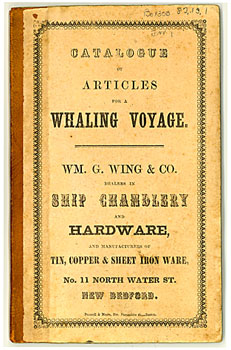Whaling Managers
The whaling businesses along the waterfront included merchants' counting houses where oil was bought and sold. It was from these places that a whaling voyage was managed. Clerks recorded transactions in ledgers. Owners and agents referred to shipping papers, logbooks, and charts that were stored around the room. Captain Jernegan might have stopped in to pay the fee (upwards of $1000 by the end of the 19th century) required of captains who wished to travel with their families.
Most whaling ships were owned by several different people called owners or shareholders because they each had a share in the profit or loss of the ship's voyage. Some of these shareholders were former whaling captains or their wives, but some were simply businessmen who had never set foot on a ship. Because it would have been difficult for all of the owners to have a say in the day-to-day operations of a whaling voyage, the owners put one person, an agent, in charge of their ship. Sometimes this agent was also an owner, but not necessarily.

Martha's Vineyard Museum